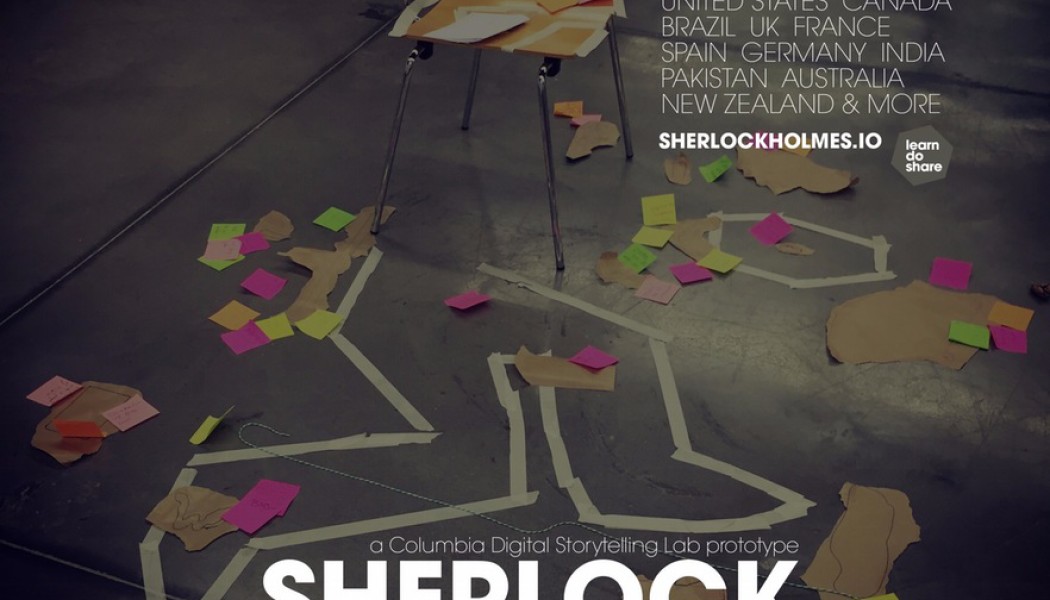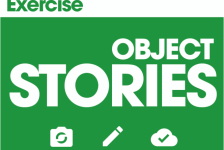Getting Started
Welcome!
Welcome to Sherlock Holmes & the Internet of Things. This is NOT a traditional online course but instead it is a unique, highly dynamic collaboration. Consider it to be a lab, a virtual studio, an R&D space, a skunkworks, a social sandbox. Over the next 10 weeks, you’ll be stepping into a unique Massive Online/Offline Collaboration (MOOC). Together we’ll be working to design, build, test and create a number of workable prototypes that can be plugged into a series of connected crime scenes around the world.
For more information on what we’ll be designing and building please review the RFP (request for prototypes). It details our design constraints and will help to frame the opportunity for you. A full description is available on our Hackpad on the page entitled, Sherlock Global Challenge RFP.
For more information about how to extend your involvement in this experiment beyond the MOOC, see the details in How Can I Join the Sherlock Global Challenge Request for Prototype (RFP)?.
Complementing Perspectives (Story, Play, Design)
Each session of the MOOC has three complementing perspectives: Story, Play and Design. The MOOC is being lead by Lance Weiler, Nick Fortugno, Jorgen van der Sloot and Ele Jansen. Each instructor will provide a different lens regarding the development of the RFP in an effort to touch on storytelling, play and design. Ele Jansen will draw attention to the intersectionalities of these three distinct tracks in order to enhance your understanding of the interplay between and among STORY, PLAY and DESIGN.

Storytelling and Experience Design with Lance Weiler
Lance is an alumni of the Sundance Screenwriting Lab, he is recognized as a pioneer because of the way he mixes storytelling and technology.

Game and Interaction Design with Nick Fortugno
Nick is a game designer and entrepreneur of digital and real-world games, he is a founder of Playmatics, a game development company.

Design Thinking with Jorgen van der Sloot and Ele Jansen
A designer and futurist, Jorgen is the co-founder of FreedomLab Future Studies. Jorgen develops creative thinking strategies and collaborative spaces.
The Learn, Do, Share Model
 LEARN
LEARN DO
DO SHARE
SHARE
Each track will contain three sections: LEARN, DO and SHARE.
In the LEARN section of the session, you will watch our original lecture videos, listen to panels of experts share their insights about a relevant topic to that week’s session, engage with guest lecturers, and read articles and excerpts from book chapters that we have curated for you. Click here for this week’s LEARNactivity.
In DO section of the session, you will complete your weekly design challenges, collaborate with your team on the RFP, participate in meetups and testing of prototypes, vote and comment on your peers’ submissions, and share your feedback with other teams via formalized peer reviews. Click here for this week’s DO activity.
In the SHARE section of the session, you will answer discussion prompts in the community forums, post your “ah-ha” moments using the #sherlockiot hashtag, generate your own mini-skill shares to boost your peers’ work product, and contribute to the RFP documentation in Hackpad. Click here for this week’sSHARE activity.
We have also curated an Additional Resources section with readings and videos that are outside of our original lecture content, but that we feel will deepen your understanding of the concepts introduced in a given week. Again, exploring these materials are optional, but by engaging with those materials within your teams and with your peers and instructors in the weekly forums with your peers, you can only increase your chances of building a successful prototype!
What You’ll Learn
By the end of this ten-week collaboration, you will be able to:
- Apply narrative design, game design and design thinking methods.
- Build collaborative spaces that enable a diverse group of creatives to work towards a common goal.
- Practice new methods that will help you design and build immersive experiences that are emotionally resonate.
- Demonstrate rapid prototyping skills for use in an environment that mixes storytelling and code.
- Participate in a hands-on experience that encourages participants to go from idea to workable prototype.
- Connect to a massive online/offline collaboration that enables you to collaborate with teams around the world.
Workload
Approximately 5 hours per week, consisting of the following activities:
- 1 hour of individual knowledge acquisition through lectures, readings, and podcasts.
- 1 hour of synthesis of previous week’s feedback into current state of your group project.
- 2-3 hours of group work to complete the current week’s design challenge and peer reviews.
Sounds Interesting, But What the Heck is IoT?
IoT (Internet of Things) also known as the Internet of Everything refers to everyday objects (appliances, automobiles, toys etc.) being connected to a network. By the end of 2015 there will be over 1.5 trillion sensors in the world. Our relationship to everyday objects will change as they become “smart” in an effort to customize experiences and needs. IoT raises many challenges in terms of security, privacy and ethics. Standards and protocols for IoT are currently being shaped in most cases outside the knowledge of the general public. Sherlock Holmes & the Internet of Things is an attempt to explore the ramifications of a connected world through a collaborative storytelling project.
How the Collaboration Works
Over the first four weeks you’ll be experimenting with forming collaborative teams of 4 to 6 people. By the end of week four, you will have conducted a needs assessment of what skills and competencies your team needs in order build a successful prototype, and you will have had time to temperature check the personalities of group to see if everyone is working in a cohesive, productive way. Both of these attributes will become very important to your team’s success in the coming weeks. By week five, you will have jelled with your “project team” and together you will design, build, test and create a workable prototype.
A number of prototypes (or elements from them) will be incorporated into a special public presentation at Lincoln Center during the New York Film Festival and in connected crime scenes around the world throughout October 2015.
You will also have the opportunity to find a team using the MOOC platform once the collaboration starts. Click on this page about Joining a Team to learn more about the process of finding your RFP project group.
This is a Creative Commons Project
This collaboration site and the works produced within it are intended to be released under a creative commons license. The goal is to establish an open R&D effort where as a group we can experiment and explore the possibilities of IoT in relation to storytelling. For more details on the creative commons license that we’re working under please click here.








Michellie Jones
Monotonectally enhance customer directed leadership and fully tested solutions. Authoritatively morph enterprise-wide web services through highly efficient meta-services. Enthusiastically productize magnetic functionalities vis-a-vis intermandated vortals. Proactively restore turnkey.